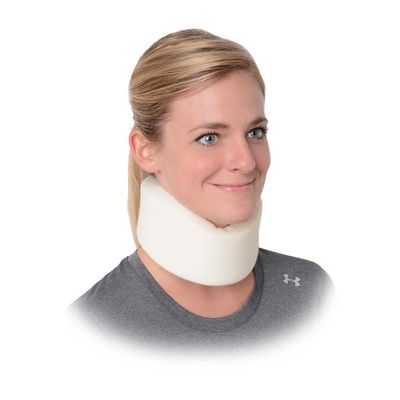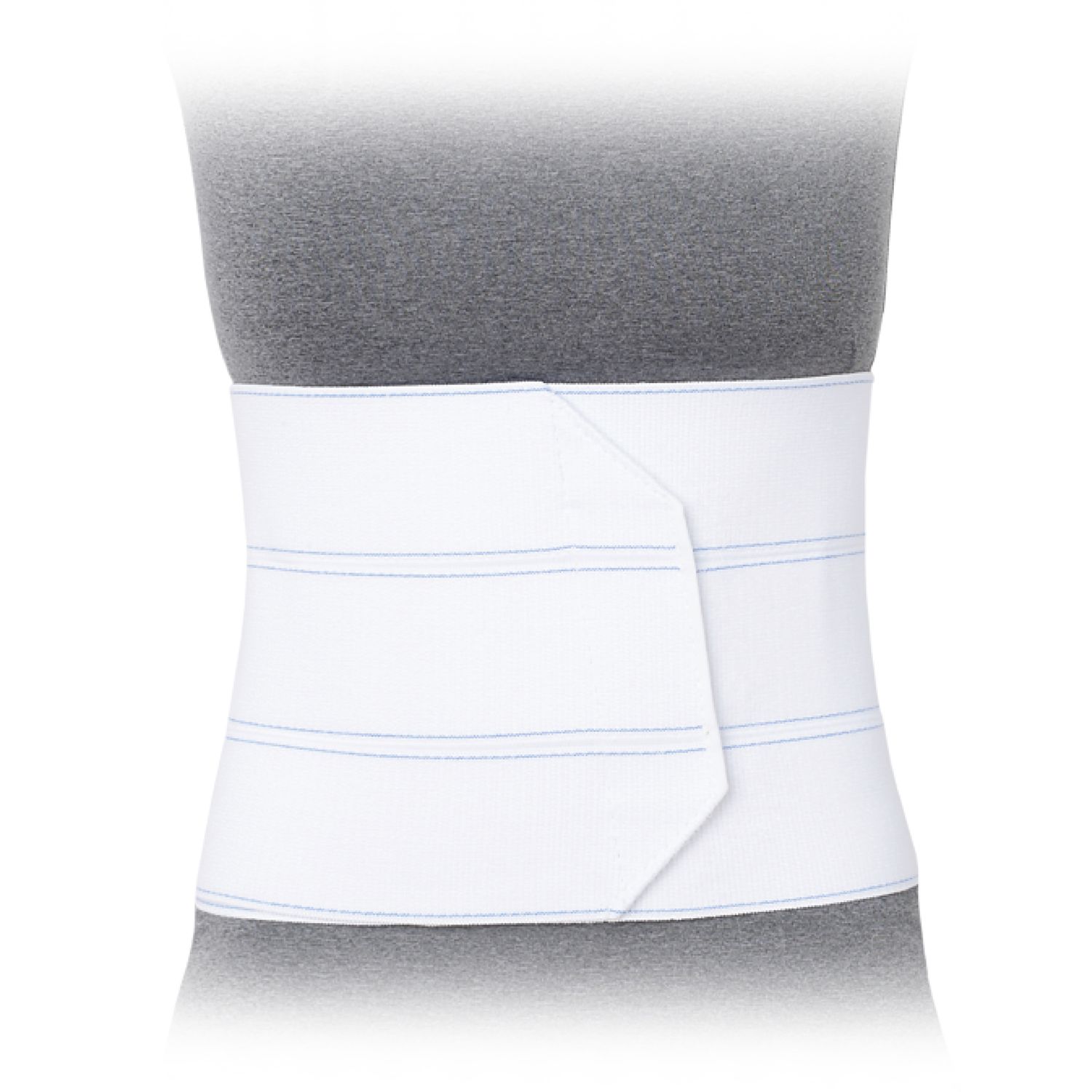
Foot & Ankle Brace
Abdominal Binder/ Support
An Abdominal Binder/Support is a wide compression band worn around the abdomen to provide support and stability to the lower torso. It is commonly used for medical, post-operative, or therapeutic purposes, offering benefits for recovery and pain management.
SUGGESTED HCPC: N/A
ORDER NUMBER: 2501, 2502, 2503, 2504
SIZE: 3-Panel and 4 Panel (see sizing chart to the left)
PRODUCT HIGHLIGHTS:
• Available in 3" and 4' panels
• Form-fitting, breathable abdominal binders conform to different patient shapes for improved compression
• Made of soft foam and high quality elastic
• Velcro™ closure
• Latex Free
• Retail box available
INDICATIONS:
Commonly used to augment the recovery process after abdominal surgery like exploratory laparotomy, cesarean section, bariatric surgery, hysterectomy or spinal surgery.
SUGGESTED HCPC: N/A
Categories: Cervical, Spine & Abdominal


Table of Contents
Foot & Ankle Brace
Foot and ankle braces are orthopedic devices designed to provide support, stability, or protection to the foot and ankle. They are commonly used in cases of injury, chronic conditions, or after surgeries to aid in healing, prevent further injury, or manage pain and discomfort.
Types of Foot and Ankle Braces:
Ankle Stabilizers:
- Purpose: Often used for sprains, strains, or minor ankle injuries.
- Design: Typically have straps or laces that wrap around the ankle to provide compression and stability.
- Common Uses: Sports-related injuries, post-surgery recovery, or chronic ankle instability.
Lace-Up Braces:
- Purpose: Provide a higher level of support than soft braces.
- Design: Made of strong fabric with laces that tighten around the ankle, mimicking the feel of tape wrapping but offering more reusability.
- Common Uses: Ankle sprains, ligament injuries, or for athletes needing extra support during activity.
Ankle
Sleeves/Compression Socks:
- Purpose: Provide mild support and compression to improve blood flow and reduce swelling.
- Design: Elastic, lightweight material that fits snugly around the ankle.
- Common Uses: Mild swelling, soreness, or mild arthritis.
Walking Boots (CAM Boots):
- Purpose: Protect and immobilize the foot and ankle after a serious injury or surgery.
- Design: Hard, rigid outer shell with adjustable straps and a rocker sole to aid in walking.
- Common Uses: Post-surgical recovery, fractures, or severe sprains.
AFO (Ankle-Foot Orthosis):
- Purpose: Stabilizes the foot and ankle, often used for conditions that affect gait or muscle control.
- Design: A rigid or semi-rigid brace that fits into a shoe and extends upward along the leg.
- Common Uses: Conditions like drop foot, cerebral palsy, multiple sclerosis, or stroke recovery.
Night Splints:
- Purpose: Maintain foot and ankle positioning while sleeping, usually to treat plantar fasciitis or Achilles tendonitis.
- Design: Holds the foot in a dorsiflexed position to stretch the calf muscles and plantar fascia.
- Common Uses: Plantar fasciitis, Achilles tendonitis, or other conditions requiring a sustained stretch.
Common Uses and Benefits:
- Injury Recovery: After ankle sprains, fractures, or ligament tears, braces immobilize the area, aiding in faster healing.
- Chronic Conditions: People with chronic ankle instability or degenerative conditions like arthritis can use braces for everyday support and pain relief.
- Sports and Physical Activities: Athletes may wear braces during high-risk activities to prevent injuries.
- Post-Surgical Use: Braces help protect the healing area after surgeries like tendon repairs, ankle fusions, or fracture fixations.
Important Considerations:
- Proper Fit: Ill-fitting braces can lead to discomfort or worsen the injury, so professional fitting is often recommended.
- Material: Braces can be made from various materials like neoprene (for compression), plastic (for rigid support), or fabric.
- Level of Support: Depending on the severity of the injury or condition, different levels of rigidity and support may be necessary.
These devices are typically prescribed or recommended by healthcare professionals such as orthopedic doctors, podiatrists, or physical therapists, depending on the injury or condition.

